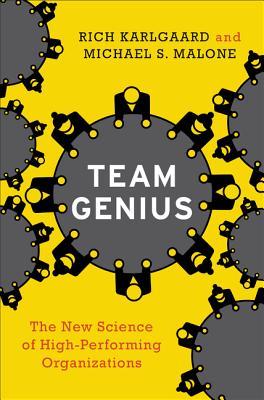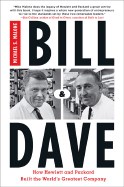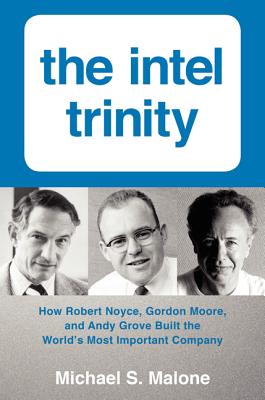Rich Karlgaard & Michael S. Malone
July 14, 2015
In Team Genius, Rich Karlgaard and Michael S. Malone have teamed up to tell why "More than ever, business success now comes down to teams."

"The pace of change is now accelerating so quickly that more traditional,
large organizations simply cannot react quickly enough to new challenges
arriving in swarms from around the globe. Their informational 'nervous systems'
—their decision-making apparatus—are too complex and slow to deal with events and threats emerging at the speed of Moore's Law. That makes them hugely vulnerable."
—Rich Karlgaard & Michael S. Malone
ABOUT THE AUTHORS
Rich Karlgaard is the publisher of Forbes magazine, where he writes a featured column, Innovation Rules, covering business and leadership issues. An accomplished entrepreneur as well as a journalist and speaker, he is a cofounder of Upside magazine, Garage Technology Partners, and Silicon Valley's premier public business forum, the 7,500-member Churchill Club. He is also the author of Life 2.0 and The Soft Edge: Where Great Companies Find Lasting Success. He lives with his family in Silicon Valley.Michael S. Malone is one of the world's best-known technology writers. A veteran newspaper reporter and columnist, magazine editor, and entrepreneur, he is the author or coauthor of nearly twenty award-winning books, notably the bestselling The Virtual Corporation, Bill & Dave, and The Intel Trinity.
As I wrote in our Jack Covert Selects review of their new book:
Team Genius is a kind of "dream team" book ... Rich Karlgaard and Mike Malone are two of our favorite writers. Malone's Intel Trinity was the 2014 800-CEO-READ Business Book of the Year, and if it weren't in the same category as Malone's book, Karlgaard's 2014 book, The Soft Edge, would have easily taken the top spot in the General Business category.
And, in their new book, Team Genius: The New Science of High-Performing Organizations, and in the brief article below, they tell us why...
More than ever, business success now comes down to teams.
Of course, teams have always been vitally important. One hundred thousand years ago, hunting teams were vital to the survival of early man. With the rise of agricultural civilization, teams were the basic operating unit of social hierarchies and communities. But for the last few millennia, while remaining a crucial building block, teams have been largely made subordinate to larger social organizations: armies, governments, bureaucracies, corporations, etc.
But the rise of the digital age, the Internet, and the global economy has changed all of that. As with many other cultural institutions, technology is beginning to turn organizations upside down. The pace of change is now accelerating so quickly that more traditional, large organizations simply cannot react quickly enough to new challenges arriving in swarms from around the globe. Their informational 'nervous systems'—their decision-making apparatus—are too complex and slow to deal with events and threats emerging at the speed of Moore's Law. That makes them hugely vulnerable.
It has become increasingly apparent—and with no little irony—that the one human organization capable of adapting to, surviving through, and even triumphing from the accelerating pace of modern life is the oldest form of human organization: teams. Teams are now the key operating unit of smart companies as they enter both newly erupting markets and cope with mature but fast-evolving ones. They are the heart of new product and service creation, and implementation. And they are the nuclei of the new operations that bubble up with increasing frequency inside the organization.
Yet, even as we recognize this growing importance of teams in the modern economy, it also becomes obvious that we know surprisingly little about them—and what we do know is encrusted by centuries of myth, misrepresentation, and wishful thinking. The painful fact is that we know very little about how big a team should be, how it should be organized, how its membership should be composed and recruited, how to properly measure its success and failure, and even how it should properly be retired to set the stage for the creation of a new team.
In other words, at the moment when teams are once again becoming the crucial tool for organizational success across every part of society, we know almost nothing about them... and most of what we do know is wrong.
The good news is that at least we now know more than we did at the turn of the century. Over the last fifteen years, behaviorists, psychologists, brain scientists, anthropologists, and organizational theorists have made some extraordinary discoveries in our understanding of how and why teams work. Little of this research has yet escaped academia and reached the professional world, so we have taken on the task of gathering that information, synthesizing it, and then presenting in the most cogent way possible and in the language of everyday life. What we've found is stunning. Ultimately, all of this research boils down to two fundamental truths about bringing out the genius of teams.
"It has become increasingly apparent—and with no little irony—that the one human organization capable of adapting to, surviving through, and even triumphing from the accelerating pace of modern life is the oldest form of human organization: teams."





